Dasha: henkilö saapuu uuteen paikkaan täällä on harmaa. tämä henkilö istuu ikkunan edessä paljon pöydällä kun kaupunki muuttuu keväällä. mutta täällä paikka ei ole muuttunut paljon, on kylmä täällä. sataa. valkoisen talon vieressä on kaksi lumipalaa, joihin henkilö kävelee matkalaukun kanssa. Henkilö alkaa katsella lunta.
This person who arrives in the grey town and encounters two snow patches next to the white art residency building is me.
I arrive from the city that has been turning green with all the snow has melted for a month now. I begin to watch the snow here.
I started to write in Finnish because I am the person who moves by connecting things. I sat at my desk in Merihaka throughout the winter and practiced Finnish language while watching snow. I felt love and care towards snow, the way people's shoes pressed on it throughout the days. I felt love and care toward the language, the way my tongue pressed the roof of my mouth and inside of my teeth when I practiced words. In May Marihaka’s snow was gone, the pressing disconnected. When I arrived at Outokumpu I started watching snow again. Out of the second floor kitchen's window, out of the first floor's living room.
Suvi, my colleague and friend in this project, arrives the day later, when spring hits and the sun gets a sudden sharpness. Two patches of snow by the window begin to melt as Suvi and I begin our three weeks Outokumpu-Magnitogorsk project.
The snow develops its project of a slow melting as Suvi and I develop ours. In the mornings we begin with melting on the floor of the living room and take turns leading a movement practice for each other. I take an early morning walk before that: the first snow patch is in the parking area in front of the house, the second one is to the right of the house. The patches are piled firmly on the cold dirt still barely melting on chilly mornings. On my way back from my walk, I jump onto the edge of the second patch and sink in with my sneakers. The marks are left and the familiar and human remains there for a while.
Suvi and I begin to go to the local theater called KinoMarita to rehearse. We bike by the snow patches. One of the resident artists, Alex, sits on the chair to the right of the snow and draws a rock. Our lives in Outokumpu become enveloped by snow and its time left.
Snow edges roughen and dark veins - sticks, leaves and pebbles - poke through, while our project also changes shape and texture, gets some semiotic sticks and pebbles as we interview the residents, talk to the students of the dance school and explore the area. I start documenting melting snow. I don’t take sudden disappearances easily, so documentation is needed to keep some kind of record of the snow movement. Keep it checked or rather keep myself checked. I lost the track of Merihaka's snow and cannot recall its disappearance anymore. I keep my own shape as a watcher every day. Suvi and I draw maps, diagrams, journal in our notebooks and start a google doc to keep a record of all of our ideas. Every day.
Snow is melting. It gets hot in Outokumpu. Suvi is taking a sun bath spread on the bench next to the fire pit in from of the residency building. I watch her naked back and buttocks from the kitchen window when turning my gaze to the left, I watch snow when turning it to the right. They both are naked in their white exposed to the sun bodies - Suvi and the snow - on the brown of the wood and dirt.
Alex, Suvi and I get the keys to the Old Mine's Torni from the Old Mine museum's desk. Suvi and I have rehearsed for a week now, our dramaturgy is lose, we are playful and playfully unsure in our practice. We take this exploration as part research, part play. We both like old objects that might have lost its anthropocentric functionality and gained another presence. The tower is full of such objects. We get to the very top and watch Outokumpu from above. I look into Russia's direction, my home town direction, my mother's home town direction. I imagine touching Magnitogorsk when I reach my arm out. We look at the patches of lakes - the nearby toxic one and the further swimming ones and fantasize how we take a day off and bike to the beach. That never happens. We take selfies. I take three photos of the snow patch. Suvi records the sound of the electric box on the way down.
I miss the very moment of the snow disappearance. I spend some time with snow the morning before considering to collect some in a plastic container. That thought embarrasses me as it exposes my attachment to objects and my un-ease of losing them. I want this snow to leave a mark in my life, to leave me with a material evidence of our encounter, similarly to how encountering Finnish language left with me with words and sounds. Yet, collecting the sample of Outokumpu snow patch doesn't feel right - it feels like grabbing, taking hostage, taking away. There are wet spots on the place of the snow patches the day after, as if the snow left its own mark before leaving.
Suvi and I do the performance at KinoMarita on Sunday, May 30th and leave the same day. There are 10 people in the audience. We drive with Suvi's mom through Finland back to Helsinki - there is no snow on the way South, only late spring naked.
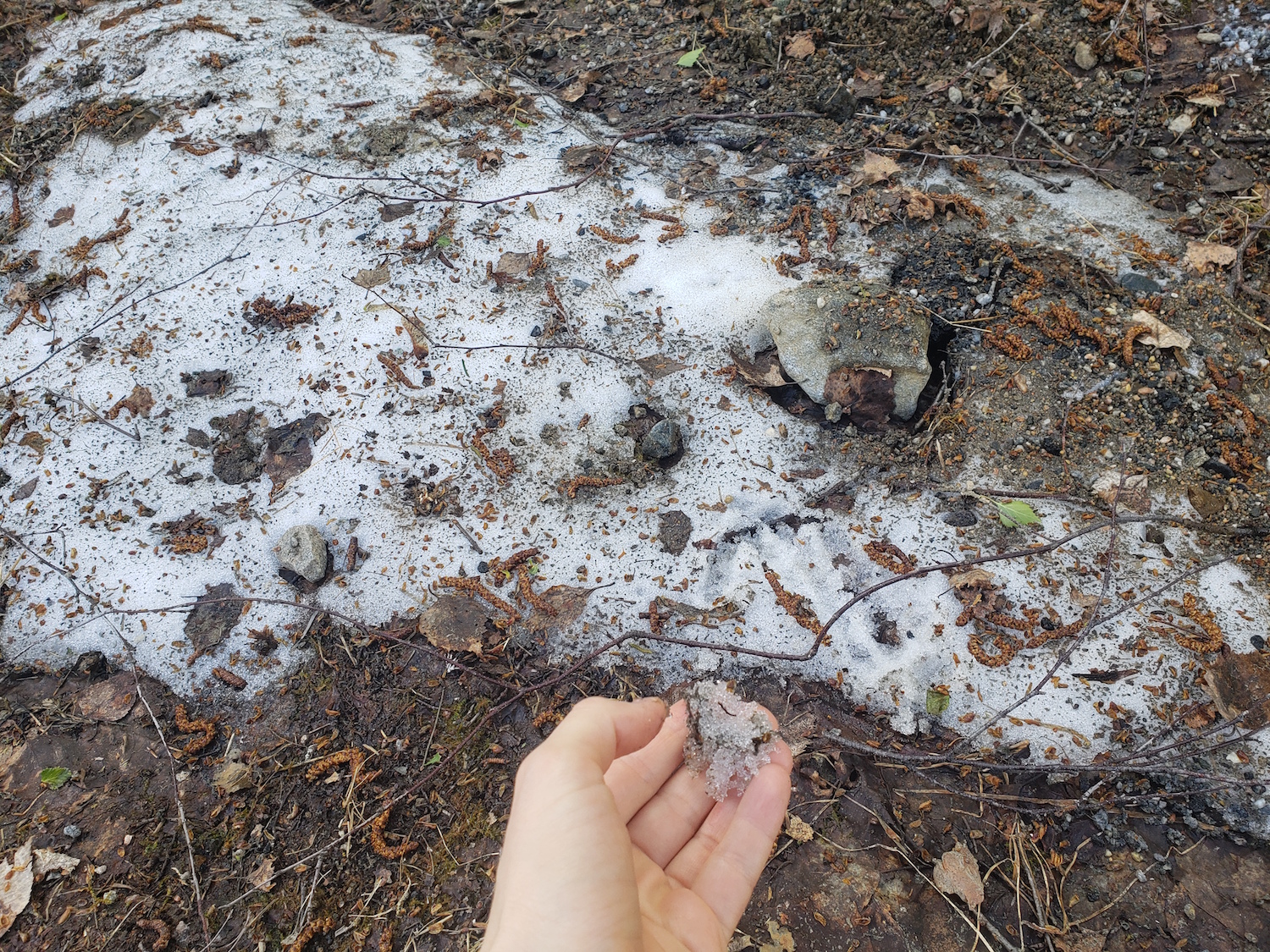
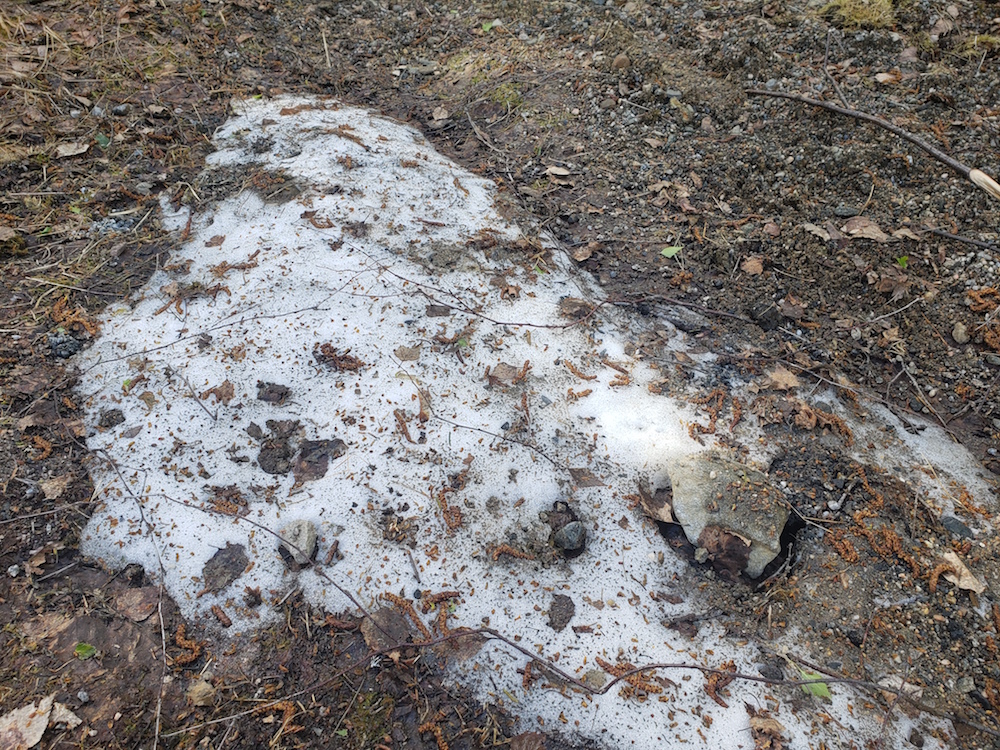
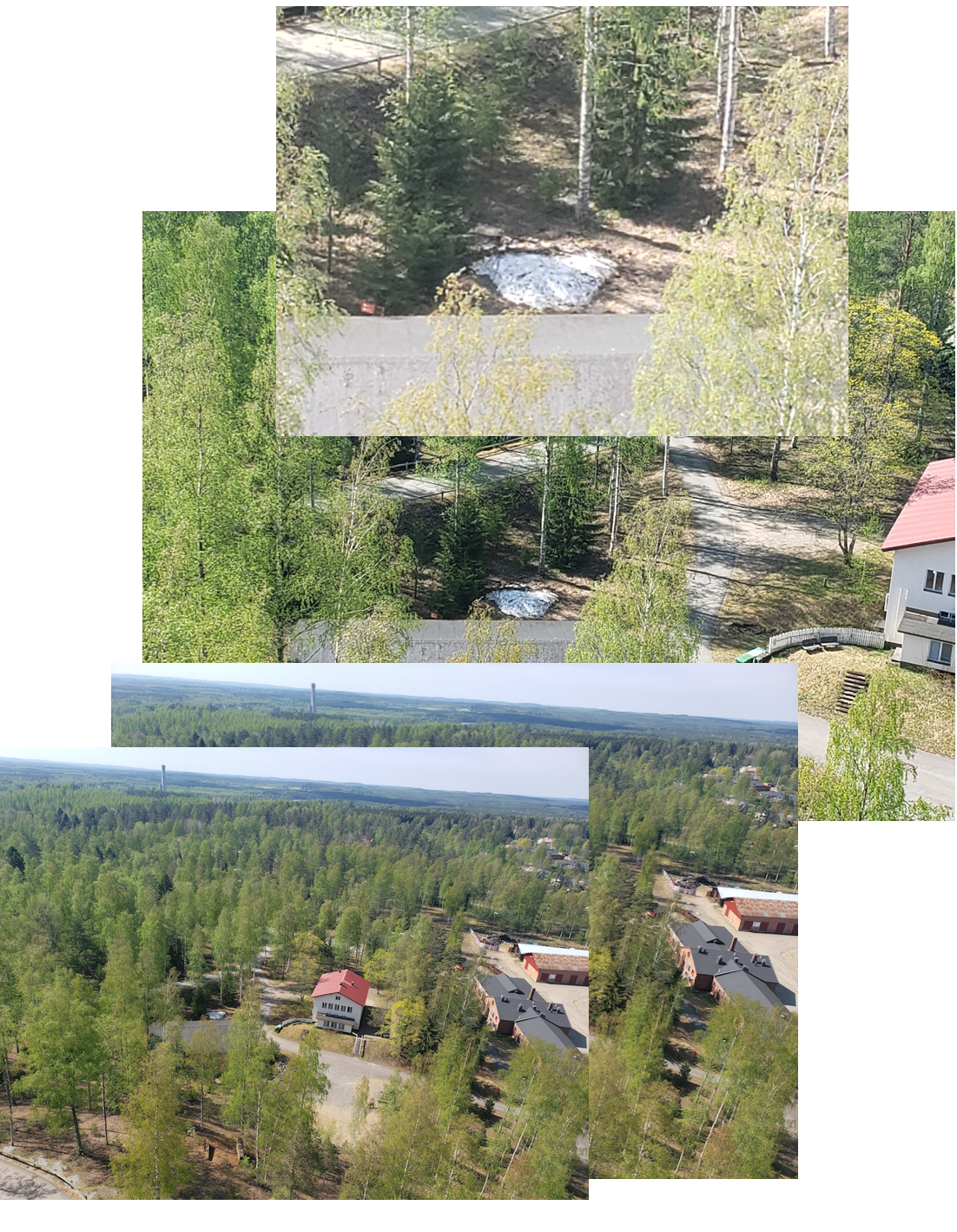
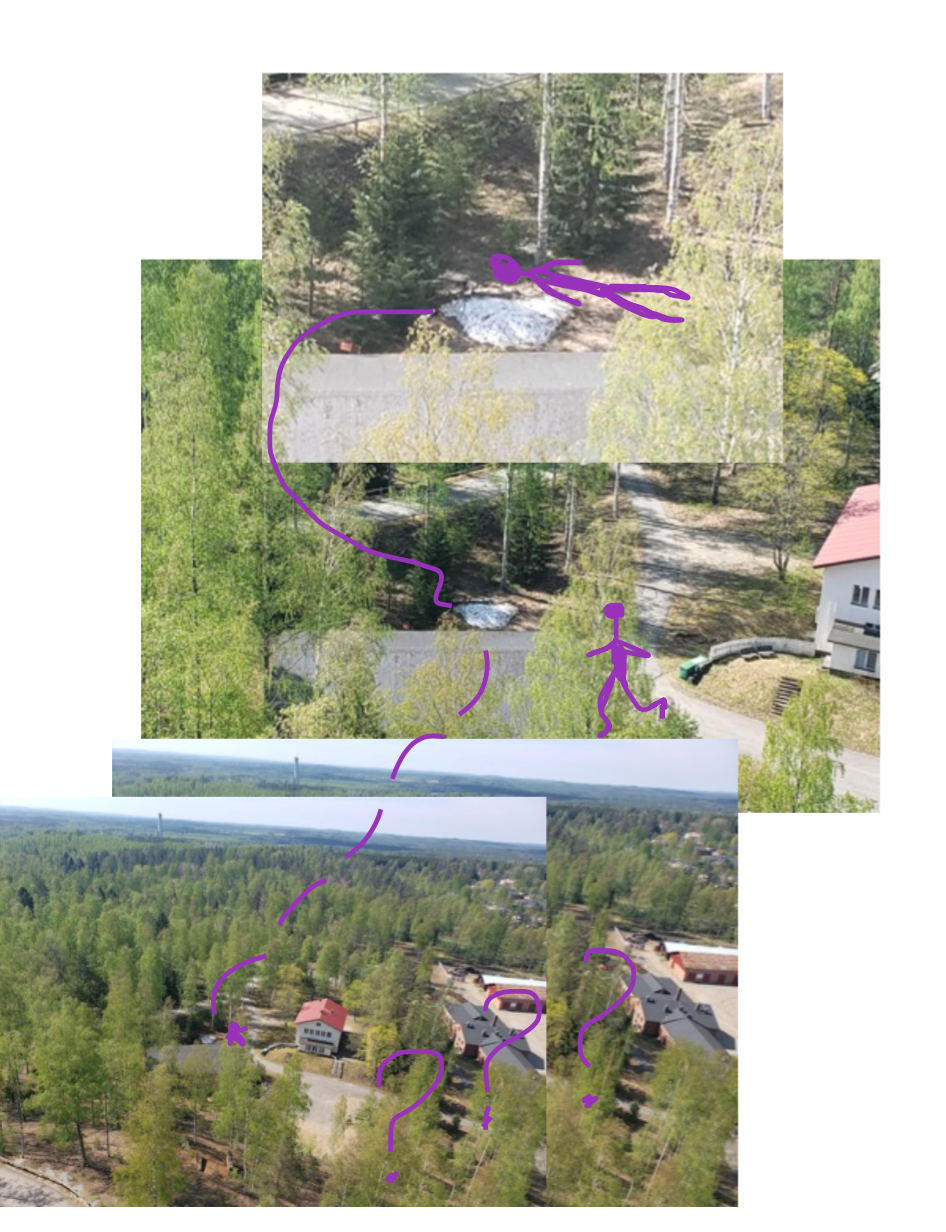
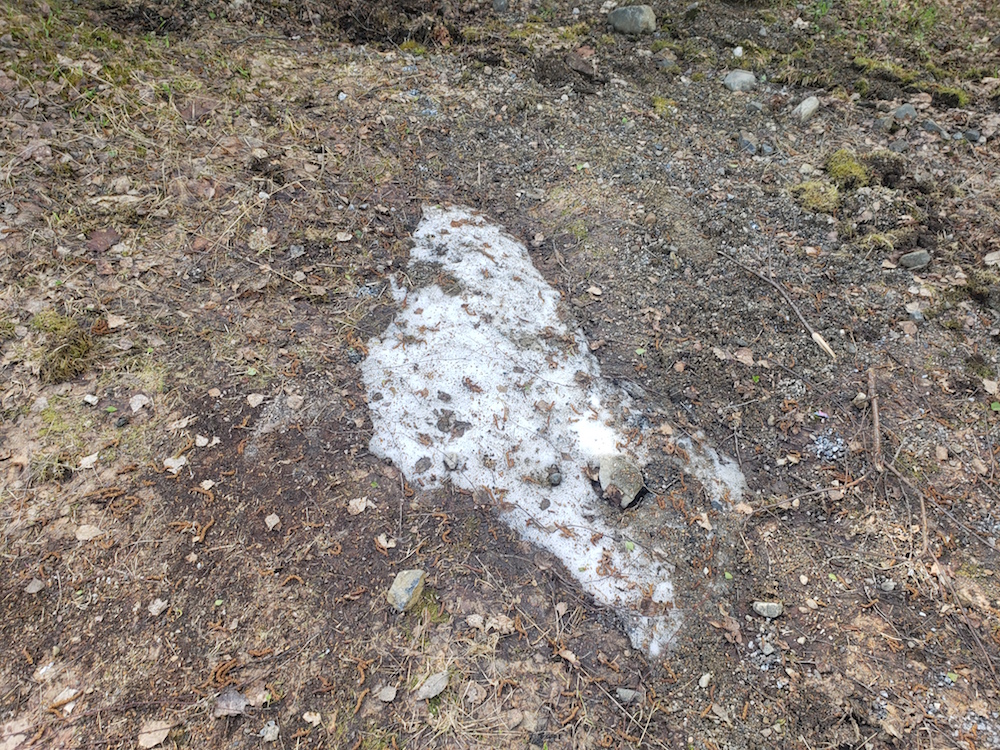
Dear Suvi, Rakas Suvi
I am writing to you after a long time of silence. Communicating through a letter is a form of speaking and I have been quiet for quite a while now exploring ways of connection that are not bound to languages. I remember that last time when we saw each other 19 years ago we walked through a forest which was full of liquid. The trees’ skins were too tight for them already in the late spring and they were ready to explode, to burst into the summertime, to expand in all directions.
I still keep your three shirts that you had on that day, the fragrances were heavy and the shirts soaked in the spring aroma. You checked the tags on the shirts to know which places of the world the bodies labored in to produce it. We looked at it together that day and read the names of the places out loud in that forest: Bangladesh, Vietnam, Ukraine. You wanted to invite all the bodies that worked to make them to gather here under these fragrant bursting trees and get some rest from work. You said that you would massage their hands with flower oils until the hands were soft and supple again.
When you left Outokumpu, you left those shirts, remember? You said that it would do better here than in the city, they could get more air here, the fabric would stay soft in this fresh small town air. Well, I made a quilt from these shirts, a nice and colorfill one, so many guests used it as an afternoon nap’s blanket when they visited. I hope you will too one day.
Näetkös, se on niin kummallista, että etäisyys joidenkin paikkojen välillä kasvoi samalla kuin etäisyys toisten paikkojen välillä lyhenee. Meillä on pian neljäs työn ja hellyyden symposium Outokumpu Oy:n ja Magnitogorskin Rauta ja metalli työntekijöiden välillä. He matkustavat tänne joka puolelta maailmaa lepäämään puiden alle. Juuri kuten sinä ajattelit sinä päivänä.
Tiedätkös, se on ollut haastava ja kaunis prosessi tuoda yhteen kaikki työläiset ja katsoa heitä, kun he opettavat toisiaan välittämään hengityksellä ja kosketuksella.
Last time, during the third Labor and Tenderness Symposium exactly under those birch trees near the old mine some workers were developing a new labor rights legislation that would give them more freedom to form alliances with machines, rocks and other humans. I hope that this is opening new ways of living together and enjoying life. I wish to tell you all this in person while we take a walk.
Mutta Helsinki vain siirtyy kauemmas ja kauemmas meistä ja kukaan ei tule sieltä enää tänne. Rakas, muistatko miten lähellä Helsinki ennen oli, vain muutaman tunnin päästä, mutta nyt kestää kuukausia ellei vuosia päästä sinne - tilat ja etäisyydet ovat minulle mysteeri nykyään. Silti, ajalla ei ole tänä päivänä niin paljon merkitystä ja olen varma, että sinä saat tämän kirjeen. Joko vuonna 2040 tai 2021, tai joskus siltä väliltä.
But Helsinki has been getting further and further away from us and no people come from there anymore. Dear, you remember how close Helsinki was at first, just a few hours away, but now it takes months if not years to get there - spaces and distances have become a mystery to me. Still, the time does not matter so much these days and I am sure you will get this letter, whether in 2040 or 2021, or sometime in between.
Here is a small birch tree twig, it will bloom if you care for it with water.
Tässä pieni koivunoksa, se kukkii jos pidät siitä huolta kastellen.
With love, Rakkaudella
Dasha
2040
Magnitogorsk / Магнитого́рск / Magnetic Mountain
Population: 407,775 people
Factory: Magnitogorsk Iron and Steel Works, founded in 1932 and currently active.
In 2017 was the 30th largest steel factory in the world
Stock price on May 18th 2021: Rub 64,14 (+0,90 (+1,42 %)
During World War 2 the Soviet organised a mass production of the T-34 medium tank during World War 2 in Magnitogorsk.
Currently, with the depletion of the substantial local iron-ore reserves, Magnitogorsk has to import raw materials from Sokolvsko-Sarbaisky deposit in northern Kazakhstan.
There are three theatres in Magnitogorsk: Pushkin Drama Theatre (the oldest in the city), the Opera and Ballet House, and the Puppet Theatre. The Church of the Ascension of the Lord opened in 2004.
Outokumpu / Оутокумпу / Strange Hill
Population: 6,508 people
Mine: Outokumpu copper ore mine, active between 1913-1989.
Outkumpu Oyj company is the largest producer of stainless steel in Europe and second largest in Americas.
Stock price on May 18th 2021: 4,81 € +0,12 (2,47%)
During World War 2 approximately 75 % of Outokumpu Oy’s trade and copper production went for Nazi Germany’s warfare purposes.
Currently, Outokumpu Oyj has factories in Sweden, Germany, Great Britain, Mexico, Tornio, United States.
There is an active cultural scene in Outokumpu due to art students and local resources. Kino Marita and Kiisu teatteri are two of the main cultural venues for experimental performing arts. The Church of Outokumpu was opened in 1955.
Taiteilijat Työssä/ Работающие Художни_цы / The Artists at Work /
Population: 2 people
Factory: The artists at work Suvi and Dasha were conceived between 1984-1989. They both have spent 10 years in higher education studies and 8006 hours doing dance and performance practice. They are not particularly successful anywhere.
No stock price on May 18th 2021.
Currently, the Artists at Work do art-related work 70 % of time without payment and 20 % of time with payment. The 10 % of time is a give/return/favor type of economy. This is the first time the Artists at Work do a work together in a theatre space.
RESEARCH
PART
Hello, my name is Suvi!
I am an art worker.
Hello, my name is Suvi!
I am … Actually the exit sign is so powerful that I might just step out now.
Okay see you bye!
Hei, minun nimi on Dasha!
Olen töissä ja tanssija.
Hei, minun nimi on Dasha!
Olen… ei, katsos enää 3 päivää niin tuo lumi ei ole enää tuossa.
Minun pitää nyt mennä katsomaan sitä. Nähdään!
The interior design of the house makes me remember a history that is not mine. Some of the objects in the space have already lost their function, but this does not mean that they are not performing. They are continuously doing something. This is how the tunnel also performed. The smell… oh my god… the smell…
The tunnel became for me a metaphor of a contained space that requires durability and discipline from the workers inside it. I started to think that there is only entry, no exit. In a way, my perception of the tunnel became contained and stayed inside the tunnel. It never came out. Is this how the mine workers also felt? The accumulation of workers happens inside the tunnel, their perception of that space becomes shared and while being outside the faces of co-workers keep haunting... the smell...
The tunnel of the artworld operates in a bit different way. It requires durability and discipline to get inside the tunnel to begin with, and then again durability and discipline to stay inside it. Very few have access. So the accumulation of workers happens at the entry. From the artworld the exit is continuously in front of your face. Its all about fighting against the exit sign. Quite literally, exit signs are somehow disturbing to me in black boxes and in galleries. But they have to keep flickering. exit, exit, exit. Silly, as if it wishes me to exit. Before its too late. Why do I dislike this world so much?
I know the answer.
To be an artist, yes, has always been a struggle and will always be. Competition, friends with benefits, friends admitting benefits, corruption, that's how it works, mostly. Its nice to perform this condition, to really put it out there. And scream. Hey, I work in a field where friends admit benefits and are corrupted!
But it comes from the gathering. Gathering to the entry of the tunnel is where the exchange of ideas occurs. Yet, the accumulation of wealth happens inside the tunnel. Where only very few have access to. Idealised privilege, that is of course constantly changing.